Alderman Sophia King, Democrat 4thWard has proposed an Ordinance on House Museums. It is on the docket to be introduced to committee on Tuesday, March 23rdand to go before full council on Wednesday, March 24. Pay attention to this ordinance because all of Chicago communities will be affected, this is not a 4thword exclusive. VOTE NO and tell your alderman.
Hopefully the ordinance fails because it is ill conceived. The ordinance changes museum from “as of right” in residential neighborhoods. Presently, if one wants to turn a home into a museum he/she has the right to do so. The proposed ordinance would prevent and harm small museum/cultural type spaces. Museums in certain jurisdictions would ask for zoning consideration and community input to do so. Current active museums would not be impacted by this ordinance because of a grandfather cause. However, newly proposed museums in other zoning categories would have to add a “special use.” This is the jest of the matter.
Chicago’s Cultural Community Objects
Many from the cultural community object to the ordinance because it will have a negative impact. Some have money tied up based on this ordinance. It is time for Blacks to take charge and control to build communities with positive impacts. The exploitation has to cease. The abundance of liquor stores, wig shops and small immigrant exploitive stores should vanish. It is almost sinful that General Iron considers moving from the North Side to the South Side practicing a clear case of “environmental racism,” And speaking of monuments we have the statue and tomb of Stephen Douglas, clearly a racist and slave advocate, sitting in Groveland Park in the heart of Bronzeville.
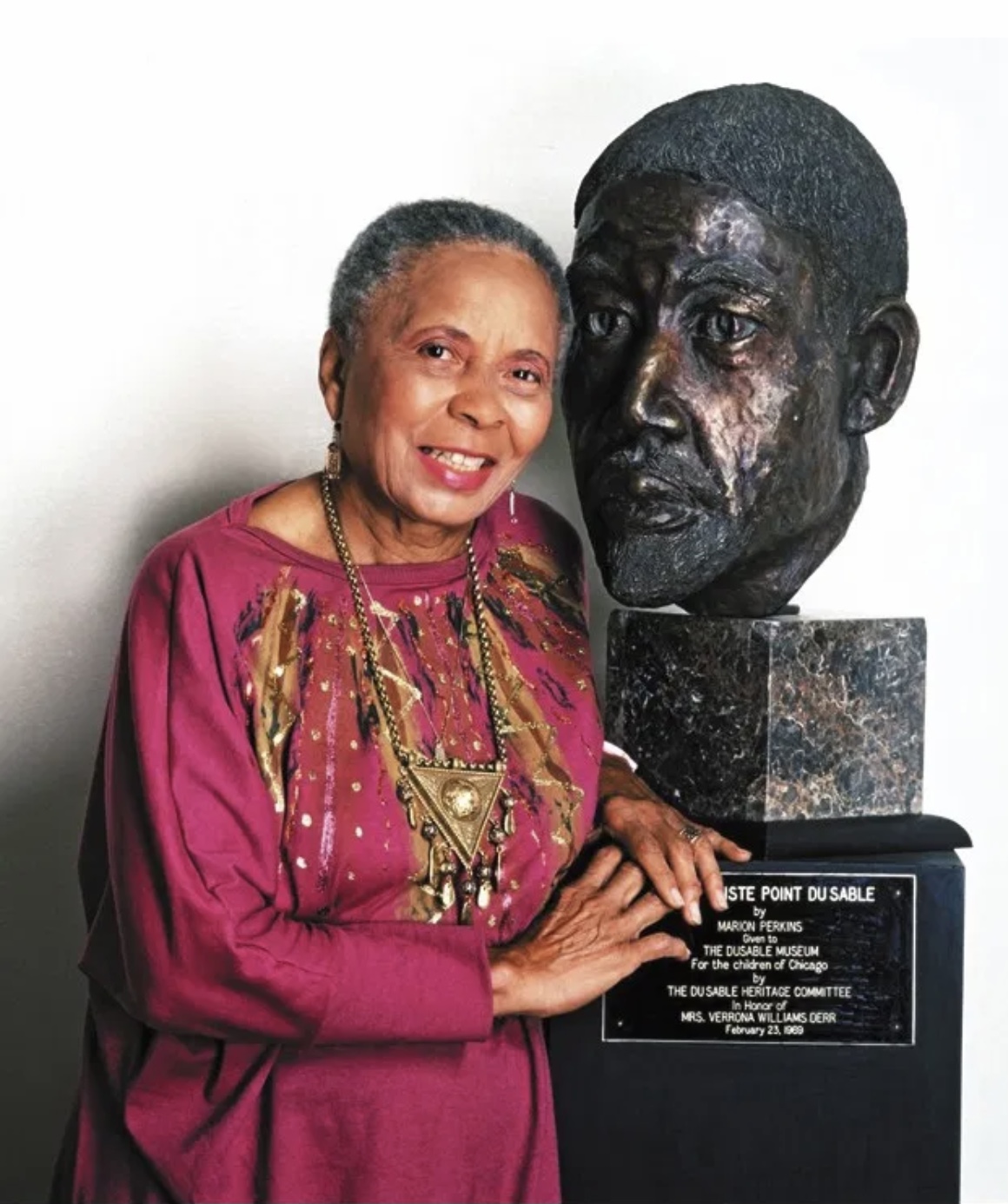
Artist and educator, Dr. Margaret Burroughs started The DuSable Museum of African American History in her living room at 3806 South Michigan Avenue, in 1961. It was originally known as the Ebony Museum. She started a movement to preserve and record Black History in her home. If not for Dr. Margaret Burroughs, we might not have the National Museum of African American History in Washington. Simple things sometimes start in the living room or at the kitchen table. She was also a part of The South Side Community Art Center, located directly across the street in the old Cermack Mansion. Had Dr. Burroughs, the arts/cultural activist, had the King Ordinance, her museum vision might had dwindled
In full disclosure, let me tell you, I have served as an art member on the DuSable Museums and The South Side Art Center, The Kenned Center and The Humanities Council. I know the dynamics of cultural/museum type organizations particularly the Blacks ones. There is always a struggle to keep the doors open.
South Side Renaissance???
The ordinance comes forth as the Black community is claiming properties in Black neighborhoods on the Southside of the city. House Museums such as the home of Mamie Till-Mobley and her son Emmett Till in West Woodlawn, located at 6247 South St Lawrence, it was built in 1895. The house has received landmark status and is prevented from demolition. Mrs. Mobley lived in the house on the second floor. The plan calls for an $11 million restoration according to Naomi Davis the founder/CEO of Blacks In Green, who purchased the building. “We are on the verge of a cultural renaissance that is appreciated far and wide with the opportunity to bring African American heritage in Chicago to its rightful level. It’s our duty and it’s our joy to share the story forward of the courage and the destiny. Alderwoman King uses a sledgehammer instead of a scalpel to resolve problems like parking regulation and community engagement. But we can have economic development in our Black neighborhoods without sacrificing peace and democracy,” Davis said. “We deeply believe that a ban on Chicago House Museums is a ban on Black History, and clearly, the public agrees.”
Clearly Chicago is on the verge of a “renaissance” in the Black community with the Obama library coming to Washington Park as a stimulus. Alderwoman King says she wants community input and is concerned about parking and the traffic that the house museums might bring. Wouldn’t it be wonderful if the south side traffic got tied up, because so many people were going to a museum?
Another consideration is the Phyllis Wheatley Club and home, a settlement house organized by Black suffragettes in the early 1900s. The new owners are calling for it to become a women’s history museum, located at 5128 South Michigan Avenue. The house was scheduled for demolition and bought by Mr. and Mrs. Tate. They did not know the history of the house at the time of purchase.

Another home is the one of Muddy Waters, who has a mural in downtown Chicago on State Street that is about 20 feet tall. His home at 4339 South Lake Park, was vacated for more than a decade. Waters is considered “the architect of modern electric blues and its offspring, rock and roll” This is the place where he made his music.
Lu Palmer’s Mansion
And then there is the last home of Mr. and Mrs. Lu Palmer located 3654 South Dr. Martin Luther King, Jr. Drive. The Palmer’s lived there from 1976 to 2004. The building has been an eye sore for years and neighbors have been concerned as the building was not even boarded up for a while, and has sat in decay for the past 15 years on the corner of the Boulevard.

Let me focus on the Palmer Mansion. The lovely home was constructed between 1885 and 1888 for the family of Justice D. Harry Hammer. https://preservationchicago.org/chicago07/justice-d-harry-hammer-mansion-lutrelle-lu-jorja-palmer-mansion/.
It is a Queen Anne Style by noted architect William Wilson Clay. He was noted for grand-scale houses and mansions. His firm also built what was then a skyscraper, the Medina Building of 1893 in the Loop. The Hammer family was prominent members of high society; indeed they were a power couple. Hammer was a noted attorney, alderman of the Fourth Ward, Justice of the Peace and a Cook County judge. The street was then the Grand Boulevard, then South Parkway and now King Drive. Hammer also owned Drexel Bank.
The street has quite a history for Black journalism. Supreme Life Insurance sits on the corner of 35th& King Drive and it is where John H. Johnson (Ebony) began his publishing career with The Negro Digest. Mr. Claude Barnett lived down the street at 3531-22 South King Drive, the offices of his Associated Negro Press, a wire service for the nation’s Black press. Ida B. Well lived at 3624 South King Drive. Etta Moten Barnett was Gershwin’s first Bess in the Broadway Theater production of “Porgy and Bess,” lived at 3619 South King Drive. She was married to Claude. During its heyday, this area provided housing to Gwendolyn Brooks, Louis Armstrong, Nat King Cole, and Bessie Coleman. Mr. Robert Abbott’s (founder of the Chicago Defender) home was also on the magnificent boulevard located at 4742 South King Drive. It is a landmark structure built in the early 1900’s. King Drive is quite a street with a rich history reflecting African American history and culture, particularly journalism existing in the day of segregation.
Meet Angela Ford/The Obsidian Collection

Ms. Angela Ford, founder of the Obsidian Collection has worked diligently for the past two years to purchase the Hammer/Palmer Mansion. She has raised funds from foundations, private sources and has requested government assistance to get the $1million for purchase.
The Obsidian Collection is an archive of photography and virtual portal for African American culture. Ford is focusing on Black photography from newspapers, and Black photographers reflecting their stories of Black America. The Obsidian Collection is a modern Griot, and Ford’s work is akin to Getty Images, but Black reflective. Already she is receiving photos worldwide. The Obsidian Collection will be a corporate office space, community meeting space and a space for exhibits and small gatherings. Angela says, “our goal is to preserve African American historical journalism through digital archiving with proper cataloging and storage of print documents, photographs, film and television. Our purpose is to make accessible to the public, the historic and factual accounts of African-America life in the United States.”
She was all ready to go and then the Alderman ordinance interrupts plans. She is blocked from the release of her funding until the zoning changes, so that she can create a new “museum” that will pay homage to Black culture and history. The Palmers would be delighted with the use of their former home, that continues their legacy, The neighbors are welcoming Obsidian on the street with open arms and eager participation. This is a history that is being lost, disregarded, overlooked and thrown away. Angela realized this as she worked at the Defender Newspaper trying to preserve photos and papers. N’DIGO photos of cover stories, events and the like have been shared with Obsidian.
Black Chicago has awakened to some of its history and buildings that are drifting away in decay and placed on the demolition black. And now, there is funding for such projects and there are people with enough interest, energy and dedication to try to preserve these cultural/historical treasures for landmark status, preservation, and restoration.
The world of museums in the city is changing. Billionaire, Ken Griffin, has added his name to The Museum of Science and Industry and he is not a resident of Hyde Park. The year of COVID 2020 was a horrible year for the likes of entertainment, theater and cultural institutions. Many have survived on a shoestring, as they have closed for the year. And now foundations are recognizing their importance and are willing to support. Ford should be applauded for raising her monies at a time, when there was massive shut down; instead she meets an ordinance preventing money flowing into her coffers. With prayer, confidence and community support she is on track to open in the spring of 2022.
King’s Ordinance is Narrow Minded
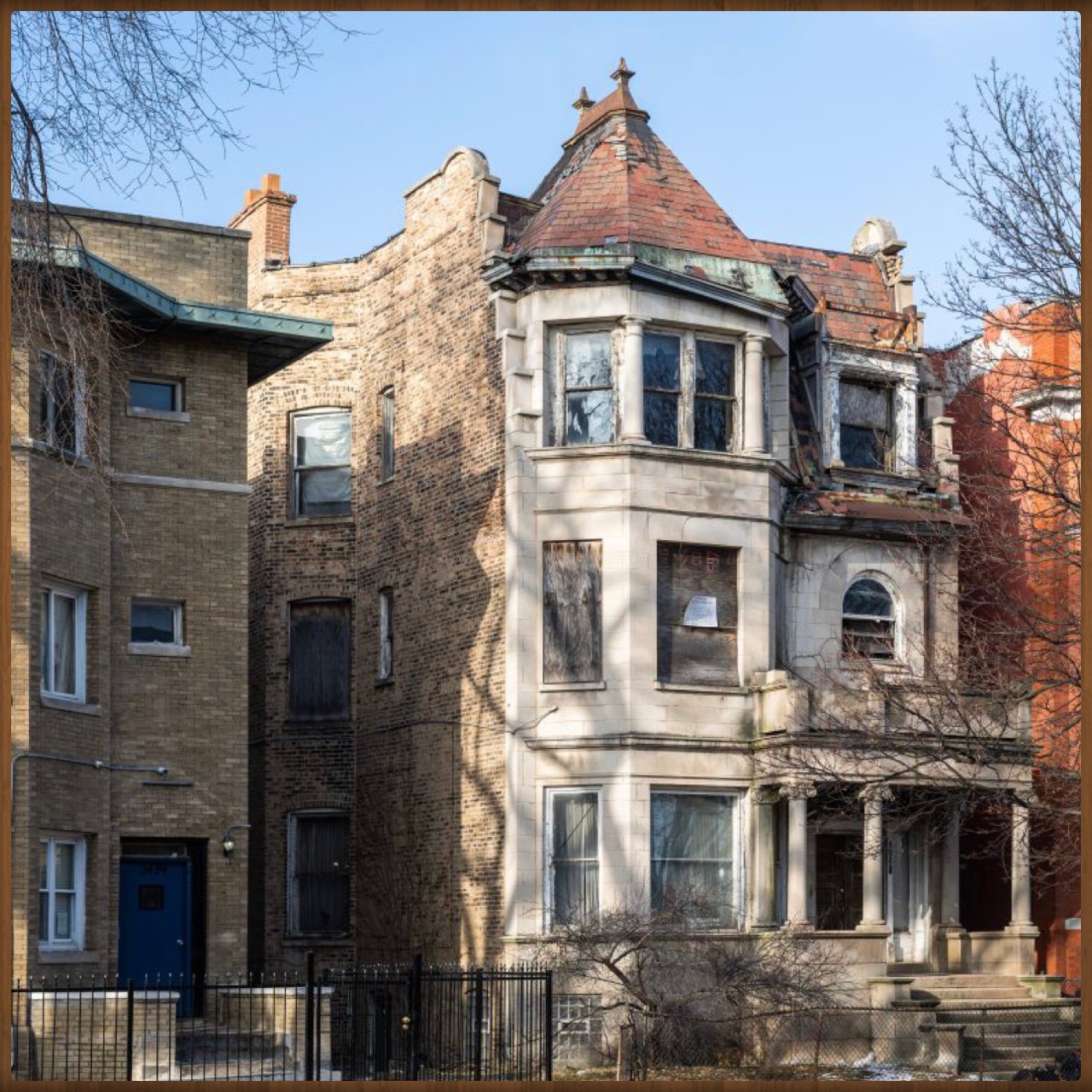
King’s ordinance discriminates. When Black people try to save their historical significant buildings, suddenly all have to agree and the issues of parking and consent become concerns. Somebody, always moves the black cheese, just as you are about to take a bite or change the rules of the game.
The Edwin Colvin House located at 5940 North Sheridan Road is nestled in a private residential area, demonstrating Prairie Style Homes on the north shore, built for printing magnet W. F. Hall. The Edwin Colvin House at 5940 North Sheridan | Connecting the Windy City

And then there is the Frances J. Dewes House, 503 West Wrightwood built for a Chicago brewer in 1896 representing his Prussian background and European tastes. The building is a unique example of the German Style, the building received landmark status in 1974. And last but not least, the Biograph on Lincoln Avenue in Lincoln Park is on the National Register of Historic Places and is also a Chicago landmark as of March 2001. The claim to fame for this building is it is the location where FBI agents shot down bank robber John Dillinger after he watched a gangster movie in 1934. So, we preserve this history and happenings of Chicago’s most notorious gangsters.
I am hoping the King ordinance is voted no. It is a bad ploy and it discriminates for Southside Black properties and interests. King helped The Ebony/Jet building, attain its landmark status. Today it sits at 820 South Michigan Avenue, a yesteryear pride and joy with small apartments that are no more than kitchenettes units. The Hammer/Palmer Mansion is peachy for a high-rise development. Instead, along comes a Black entrepreneur to preserve the building and to restore it the cultural essence of those who lived in it and to represent the historical quality on the block.
We deserve better. And King should focus on other ordinances. Great work that King got Congress Parkway renamed after Ida B. Wells, that the entire city recognized. More of that please, Alderman King. Don’t narrow the scope, expand it.
If you agree that this ordinance is a bad one for Chicago, call your alderman and tell them to VOTE NO.
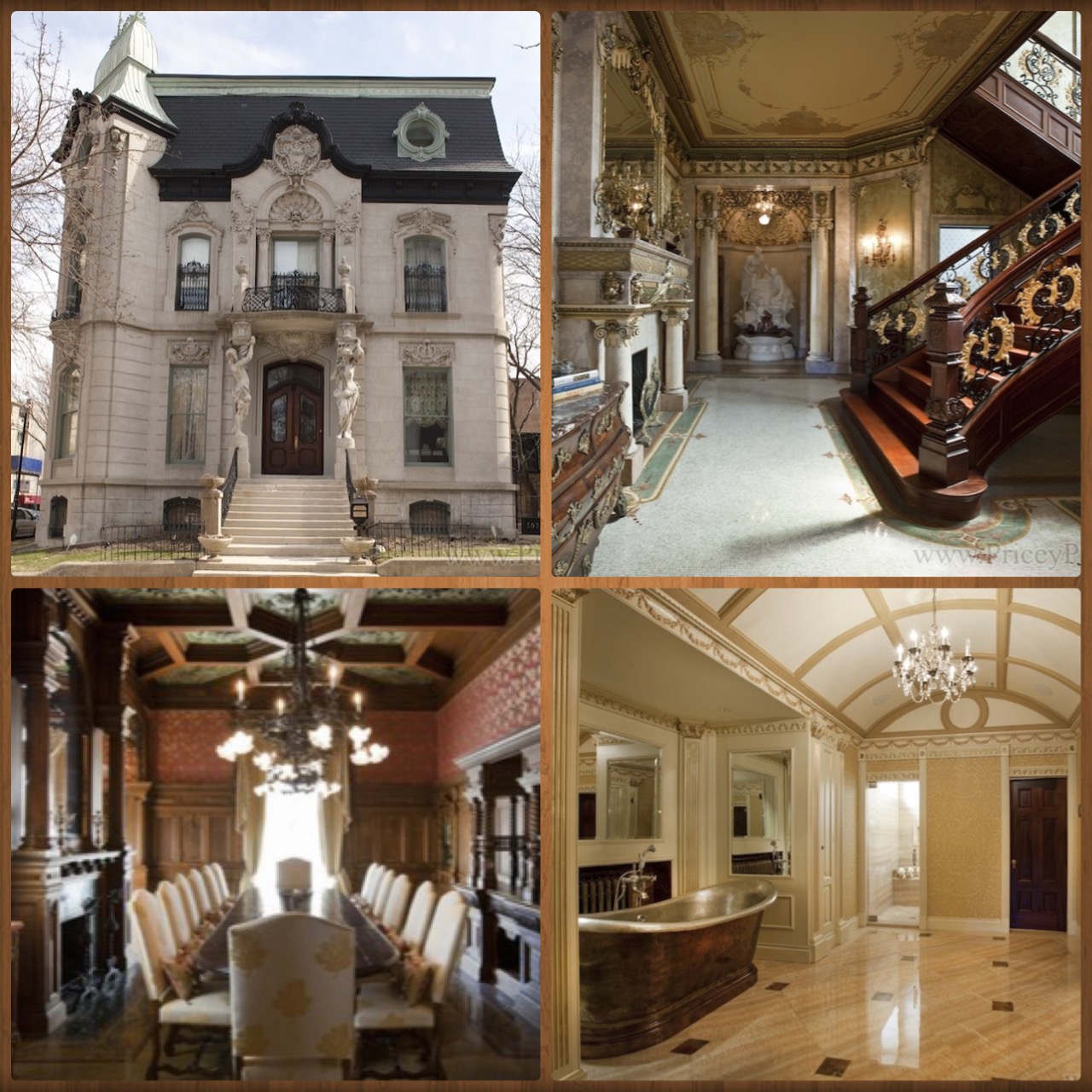
The Ordinance…
House Museums Deserve a Community Process
It is important for us to protect both our cultural heritage and our community. They are not mutually exclusive. The proposed ordinance was initiated in an effort to seek community engagement and support of museums as well as to provide assurances to the community that the museums will be an asset to the neighborhood. This process will also encourage the proposed museums to consider and engage the community, in its initial stages of planning so that there is an alignment of interests and support as we seek to preserve and protect the history and heritage in Chicago.
Community members have raised numerous concerns regarding current proposals to convert existing homes into museums after learning that there are no procedural safeguards in place for current residents to weigh in, have their concerns addressed, and hopefully, to create an alliance between the proposed museum and the community.
We are not trying to stop, inhibit, or deter cultural exhibits and museums, and we are certainly not trying to prevent important history from being acknowledged and celebrated We met with many obstacles to landmark the “Ebony/Jet” building and to pay homage to Ida B. Wells (with the first street downtown named after an African American and Woman) so understand all too well the challenges to preserve our cultural treasures.
We are, however, responsible for protecting the preservation of our history and our community. We understand and appreciate that certain homes have historical importance and need to be preserved and that some should be an attraction. But every home should not have this right and certainly, the very community where it is being proposed should have input. Even preserving a home via Landmark status comes with zoning consideration and a community process, which is all we are asking for here.
Museums by their very nature are public attractions that may bring large numbers of people to them as well as affect traffic patterns and parking. Currently, individuals can “as of right” turn their homes into museums, add stores to sell goods, and bring hundreds of people to the neighborhood, without adding parking and without any consideration for existing residents. Museums also have the absolute right to file for non-profit status and take their homes off the tax rolls, while potentially transferring some of the new costs and effects of changes to traffic and parking of the proposed museums to the community. The ordinance we are proposing would bring transparency, community input, and a process to a decision that impacts so many.
To put it in perspective, there are only 3 existing museums in the entire city that are in an RS1, RS2 or RS3 zone: Edgewater Historical Society, Norwood Park Historical Society, and the Ridge Historical Society. These museums are all over a hundred years old. Each of them is also on the main thoroughfare or arterial street, and on the edge of a residential neighborhood, not on a residential street.
Our ordinance would change museums from “as of right” in Residential neighborhoods (RS1, RS2 and RS3 designation). However, this doesn’t mean that one cannot have a museum in these areas. It just means that a proposed museum in those zoning jurisdictions would have to ask for zoning consideration and community input to do so. No current museum would be impacted by this ordinance. And newly proposed museums in other zoning categories would have to add “a special use”.
Notably, none of the individuals or organizations that are currently proposing museums live in the community that is being impacted. We believe that something so significant, that might impact community residents’ quality of life and perhaps their single largest investment, should have a process for engagement and input. This ordinance proposes transparency, community input and a process to make these impactful decisio



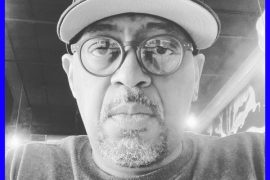

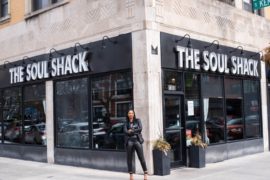

Many important issues aren’t being discussed, including:
Accessibility-wheelchairs, ramps, elevators,
Fire-sprinklers, smoke detectors, fire extinguishers
😐
Some important issues aren’t mentioned, including:
Accessibility-wheelchairs, ramps, elevators, 😐
Fire-sprinklers, smoke alarms, fire extinguishers, 😐
Crime-evil violence and pilferage
unfortunately. ☹️